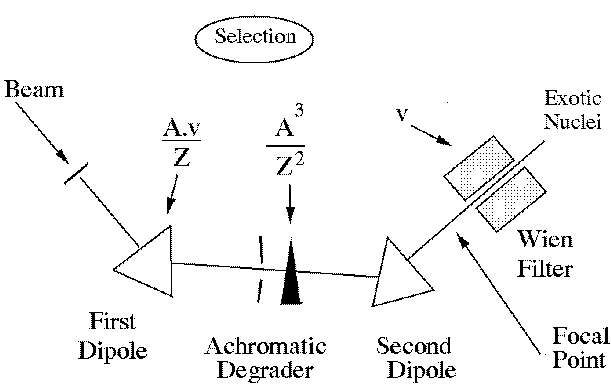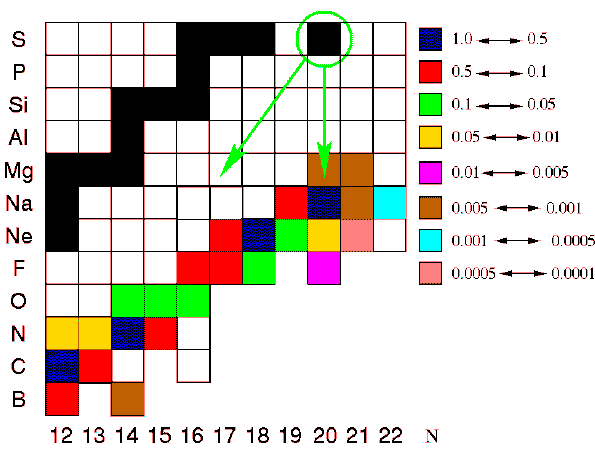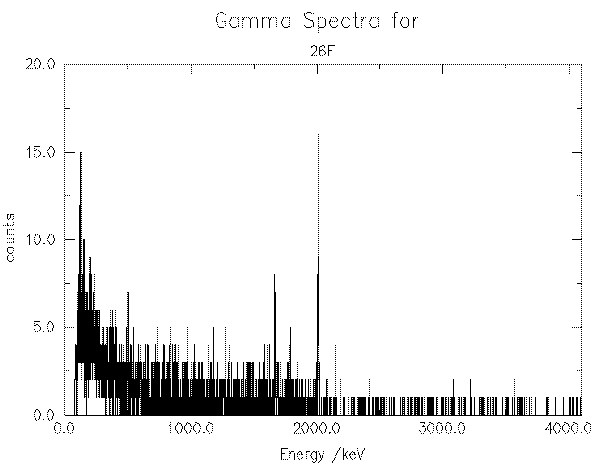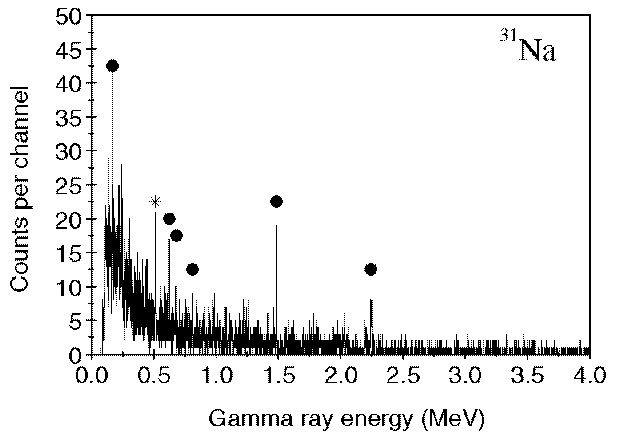
The neutron drip line represents the boundary beyond which nuclei contain so many neutrons they disintegrate by spontaneously emitting excess neutrons.
Nuclei in the vicinity of the neutron drip line are weakly bound
and exhibit unique physical properties, which are of considerable
interest for testing theories describing exotic nuclei. Steady
progress has been achieved in mapping the location of the
neutron drip line recent years but the basic decay properties
such as half-lives and beta-delayed neutron emission
probabilities are undetermined for almost all of the
exotic species and even less is known about their
spectroscopy. These important measurements can reveal
details of the underlying microscopic structures which
can provide a test of modern shell model calculations.
An experiment was therefore carried out at GANIL using the LISE3 Spectrometer which can separate out nuclei according to their:
(Nuclei contain Z protons and N neutrons and have mass number, A, equal to N+Z.)

A telescope containing six silicon detectors was used to measure the energy loss and the time of flight of the nuclei which were implanted in the fifth detector. The exotic nuclei were produced by fragmenting a high energy (77.7 MeV/A) beam of the rare isotope 36S and then selecting these fragments using the LISE3 spectrometer. Owing to the high energies the nuclei are fully stripped of their electrons. The diagram above demonstrates the different forms of selection possible and using these it is possible to pick out the different nuclei. A typical nuclide identification spectrum with LISE3 optimised for 26F is shown here, where the x-axis is TOF and the y-axis corresponds to Z. Each cluster of events corresponds to a distinct nuclide. Other spectrometer settings were also used to optimise for other nuclei of interest.

The region of nuclei studied with
this experiment is the
heavy nitrogen, oxygen, fluorine, neon, sodium and magnesium
isotopes. A chart of the nuclei produced is shown above, from
which it can be seen many exotic nuclei were produced in
the A/Z=3 region. Since hardly anything is known of the
spectroscopy of the nuclei in this region or their beta-decay
properties, the silicon telescope was surrounded by forty
two individual 3He proportional counters for
detecting beta-delayed neutrons and four 70% germanium
detectors for measuring the energies of beta-delayed gamma-rays.
The data are currently being analysed at Liverpool, Orsay and Dubna, with the analysis at Liverpool concentrating on the beta-delayed gamma-decays of 25,26F and 27,28Ne which are being studied for the first time in the present work.
Preliminary gamma-ray spectra are shown for 26F, 28Ne and 31Na. The beta-delayed gamma-rays for 31Na are already known and these are marked on, as is the 511keV line.



The analysis of these data is ongoing at the moment.
This work was a collaboration between: University of Liverpool, IPN Orsay, FLNR-JINR Dubna, LPC Caen, GANIL, IAP Bucharest, NPI Rez and University of Surrey.
The Liverpool group members are: Alan Reed, Robert Page, Roger Allatt, Alex Keenan and Paul Nolan.
Last modified: 20 September 1999
Written by Alan Reed, atr@ns.ph.liv.ac.uk